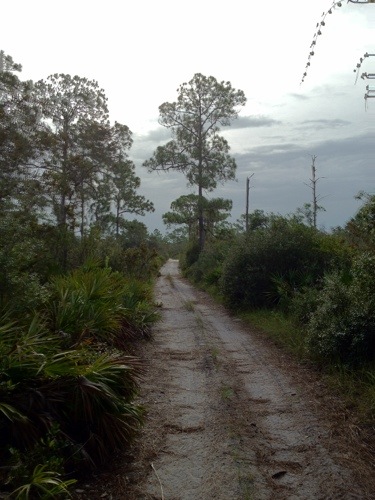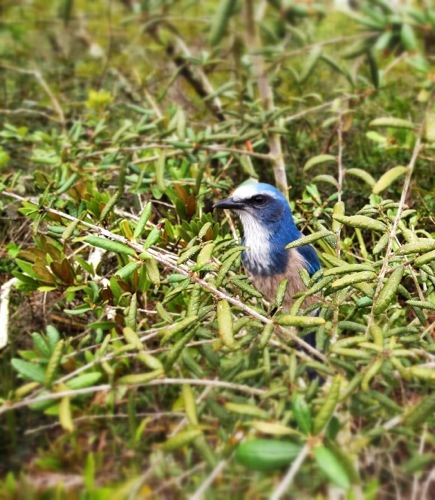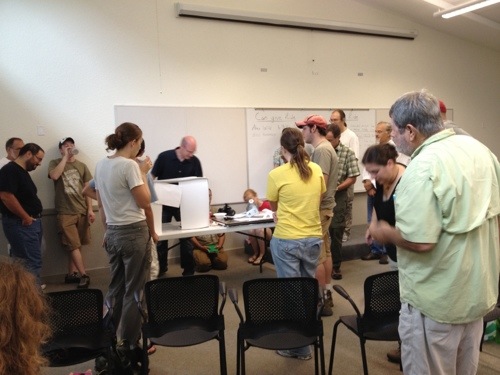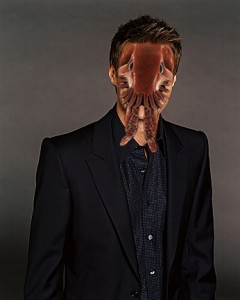It may just be me, but I think mornings in Florida are earlier than they are anywhere else. What other reason would make me be so slow to get out of bed this morning? Clearly not the late night photography, or the editing into the darkness, or the midnight social hours, because there’s definitely no down side to those activities. That must mean there’s a temporal disturbance surrounding Archbold Biological Station that makes mornings come sooner than anticipated!
After finally crawling from bed just in time for a bowl of cereal, the group was back out into the field to find and photograph whatever insects they could find, and put some of the newly learned techniques into practice. I spent the morning hanging out with Thomas Shahan and wandering through the Florida Scrub. This is such a unique habitat, and while the insects require a little more searching to find, there are some absolutely fantastic organisms roaming around. I spent some time with a patient bee fly (family Bombyliidae, photos to come later this week) as well as some of the stations Florida Scrub Jays, which weren’t afraid to pose for a photo. I’ve heard they really enjoy peanuts, so maybe they were looking for a handout for their time, but sadly I had nothing but thanks to give.
Soon we were back together at the station posing for a group photo (or 3, or 5…) and then learning about white box photography from Alex Wild. A white box is literally just that, a simple box lined with white paper on the inside to bounce light around, where you can place an insect to get super soft, diffuse lighting. What I found most interesting was Alex has begun leaving the back of his box open, allowing there to be a shadow produced along the back defining line of his subjects. We normally use styrofoam coolers from fish markets in our lab for this sort of photography, but I’m curious about trying Alex’s open back door technique (my only worry being that it leaves a pretty big opening for flies and other skitterish flying insects to vacate the area).
After lunch we had a few hours to spend off by ourselves, so I took MOAR photos, and then started getting them onto the computer to have a look. I’ve been pushing myself to get out of my shell and try new things, and by the first look at the photos, I’m going to have to keep trying! I really haven’t had a chance to edit anything yet, but I’ll be sure to share some photos throughout the week as I get them touched up.
We finished off the afternoon learning about focus-stacking from Thomas Shahan, and high speed photography from John Abbott. Both techniques are specialized for specific circumstances; focus-stacking to provide more depth of field in a composite of several frames focused on different planes, and high speed photography to stop insects in flight. Although I’ve done a lot of focus-stacking with my work in the lab on pinned specimens, I’ve never really tried it with live organisms in the field or studio before. The results can be quite stunning, but I’m not sure it’s something I’ll get into.
High speed flash photography however, is something that I’d love to try after I win the lottery! By using super-fast shutter speeds, big banks of high-output flashes and laser triggers (yes, LASERS), John is able to photograph insects in flight, completely stopping their motion. The photos that John showed were absolutely incredible (you can see a selection of his work in his gallery here), but it requires a ton of equipment (and considerable knowledge & experience with electrical engineering it would seem), most of which isn’t cheap. Like most things with digital photography now-a-days though, there is a potential more affordable alternative that may allow more people to get into the game, with a new product called StopShot. Maybe one day I’ll try my hand at high speed photography, but it will be awhile I expect.
After dinner we had another short photo critique session, and then plenty of free time to socialize and work on making or editing images well into the evening again!




